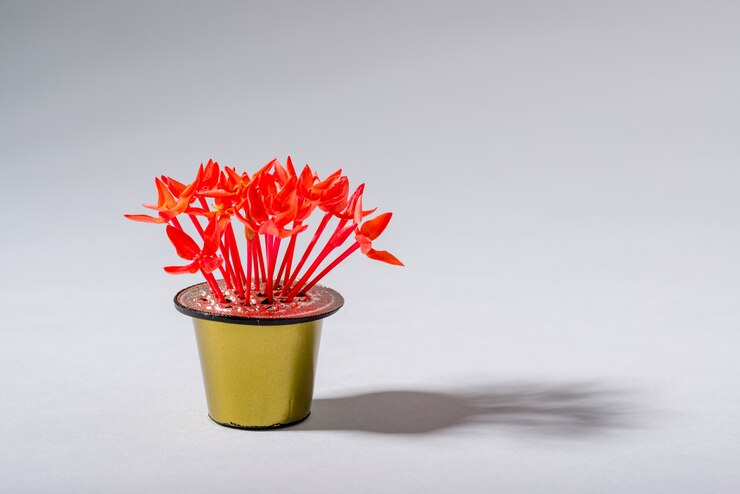The lipstick plant is a captivating addition to any home with its vibrant blossoms and cascading foliage. Native to the tropical regions of Southeast Asia, this unique plant gets its name from its bright red, tubular flowers resembling a tube of lipstick. Whether you’re a seasoned plant enthusiast or a budding green thumb, the lipstick plant offers multiple benefits that make it a worthy addition to your indoor garden.
Lipstick Plant Origins and Varieties
The lipstick plant, scientifically known as Aeschynanthus radicans, thrives in the humid, warm climates of its Southeast Asian homeland. With over 150 species, the lipstick plant family offers various blooms and foliage to explore. Among the most popular varieties are the Black Pagoda, Mona Lisa, and Rasta, each bringing its own character to your living space.
The Black Pagoda stands out with its dark, glossy leaves and contrasting red flowers, making it a striking choice for any plant collection. On the other hand, the Mona Lisa variety features bright green leaves and characteristic red blooms, adding a splash of color to your home. Lastly, the Rasta lipstick plant showcases curly, twisted foliage that creates a whimsical appearance.
Why Grow Lipstick Plants at Home?
Lipstick plants are more than just a pretty face. They offer many benefits that cater to plant lovers and interior decorators alike. Their air-purifying qualities contribute to a healthier indoor environment by removing toxins from the air. This makes them an ideal choice for enhancing air quality in your home.
Another advantage is their low-maintenance nature. Lipstick plants are relatively easy to care for, even for beginners. They require minimal attention, making them perfect for busy individuals or those new to gardening. Their resilience and adaptability allow them to thrive in various indoor conditions.
Lastly, lipstick plants are an excellent aesthetic addition to any space. Their cascading vines and vibrant flowers can enhance any room, providing a touch of natural beauty and elegance. They can be easily incorporated into various decorative styles, from minimalist to bohemian chic.
Caring for Your Lipstick Plant
Taking care of a lipstick plant is straightforward once you understand its needs. Providing the right conditions will ensure it flourishes and rewards you with beautiful blooms.
Ideal Growing Conditions
Lipstick plants thrive in bright, indirect light. While they can tolerate lower light levels, insufficient light may result in fewer blooms. Place your plant near a north or east-facing window, where it can receive gentle morning sunlight. Avoid direct sunlight, as it can scorch the leaves.
Temperature and humidity play vital roles in the health of your lipstick plant. They prefer temperatures between 65°F and 80°F (18°C-27°C) and benefit from a humid environment. To maintain humidity, consider misting the leaves regularly or placing a humidifier nearby.
Watering and Fertilization
Watering your lipstick plant correctly is crucial to its wellbeing. Allow the top inch of soil to dry out between watering, and then water thoroughly. Overwatering can lead to root rot, so ensure proper drainage in your pot. During the growing season, typically spring and summer, increase watering frequency slightly.
Fertilizing your lipstick plant every four to six weeks during the growing season can promote lush foliage and vibrant blooms. Use a balanced, water-soluble fertilizer at half strength to avoid over-fertilization, which may harm the plant.
Troubleshooting Common Lipstick Plant Issues

Even with the best care, lipstick plants may encounter some issues. Understanding these problems and their solutions can help you address them promptly and keep your plant thriving.
Yellowing leaves are a common issue, often caused by overwatering or inadequate light. Ensure the plant’s soil is drying out between waterings and adjust its lighting conditions if necessary. If the problem persists, check for pests such as spider mites or aphids.
Pests can be managed through regular inspection and treatment. Wipe the leaves with a damp cloth to remove dust, which can attract pests. Use insecticidal soap or neem oil to treat infestations, following the product instructions carefully.
Incorporating Lipstick Plants into Home Decor
Lipstick plants can become stunning focal points in your home with the right display and styling. Their trailing vines and bright flowers offer endless possibilities for creative decor solutions.
Hanging Baskets and Shelves
Hanging baskets are an excellent way to showcase the cascading nature of the lipstick plant. Hang them at eye level for a dramatic effect, or place them on high shelves to create a lush, green curtain. Pair them with trailing plants like pothos or string of pearls for added visual interest.
Terrariums and Tabletop Displays
For a modern touch, consider using glass terrariums to display your lipstick plant. This allows you to create a miniature garden that draws attention to the plant’s intricate blooms and leaves. Alternatively, place a small lipstick plant in an elegant pot on a coffee table or desk to add a pop of color to your interior.
Sustainability and Environmental Impact
Growing lipstick plants at home can contribute positively to the environment. By reducing indoor air pollution, they help create a healthier living space. Additionally, cultivating plants at home encourages sustainable practices, such as using natural fertilizers and minimizing chemical usage.
Choosing to grow lipstick plants also supports biodiversity by preserving rare plant species. Many nurseries and plant suppliers prioritize sustainable sourcing, ensuring that their plants are ethically grown and harvested.
Conclusion
Lipstick plants are a delightful addition to any home, offering beauty, health benefits, and versatility. By understanding their care requirements and exploring creative display options, you can enjoy the vibrant presence of these plants in your living space. Whether you’re an experienced gardener or a novice, lipstick plants provide an accessible way to enhance your home environment.

